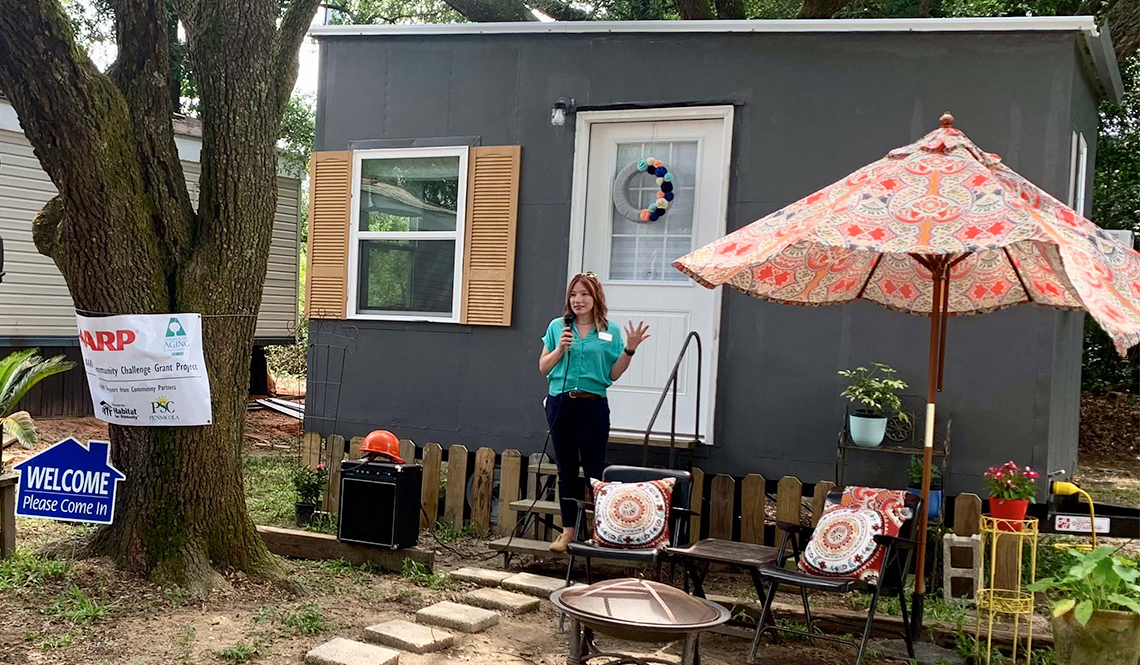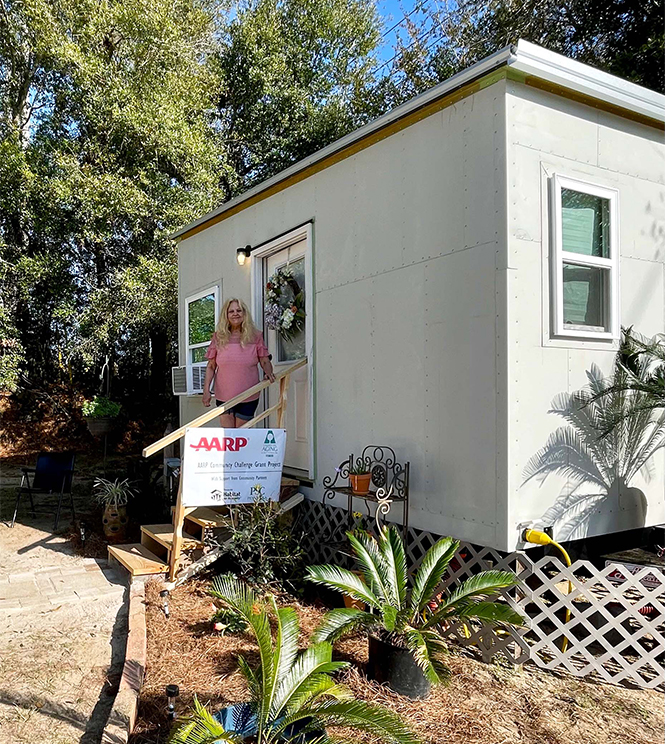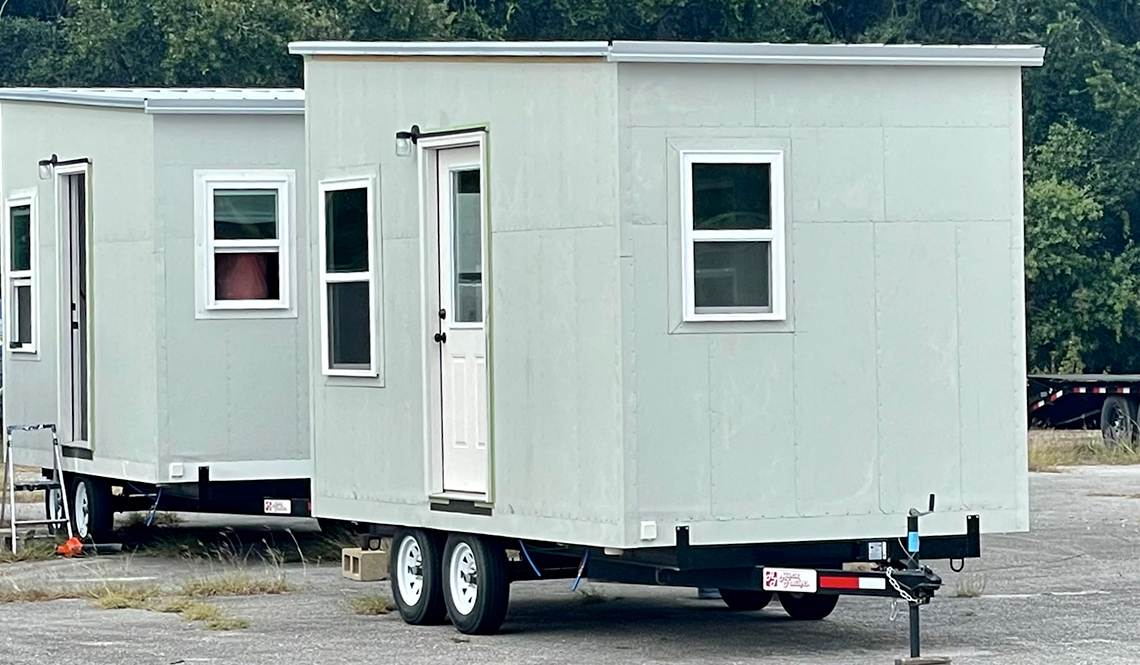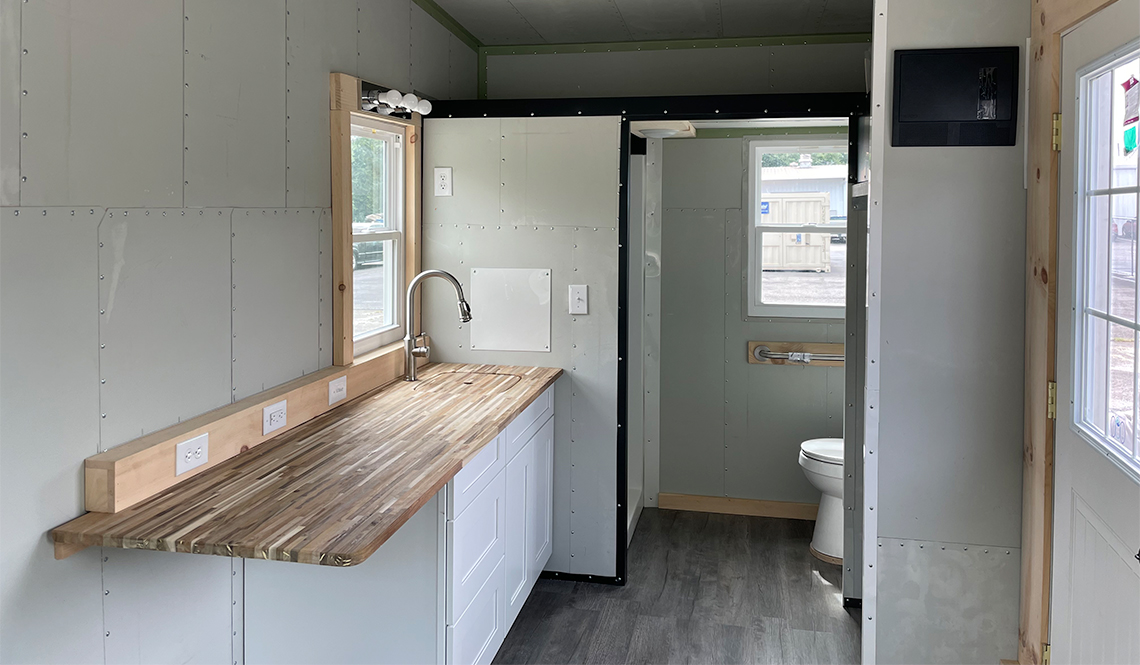Tiny Houses Can Help Reduce a Huge Affordable-Housing Shortage
A 2022 AARP Community Challenge project in Pensacola, Florida, shows how
Council on Aging of West Florida is often contacted by or on behalf of older residents in desperate need of housing and asking for help. In most cases, all the Pensacola, Florida-based agency can do is tell people to get on the region’s waiting lists for senior housing.
AARP Community Challenge
Learn about other housing-related projects that have been supported by the AARP Community Challenge.
* Check out the photo album to read about a tiny house community in Eugene, Oregon.
In 2022, the agency chose to address the housing problem directly by using its AARP Community Challenge grant for a housing-related demonstration project. “Housing is the biggest need,” explains Emily Echevarria, and it has the potential for the “biggest impact.”
Because the organization's staff didn’t have experience in the housing space, it reached out to local developers and one put them in touch with Rick Dye, a retired bank president who volunteers as an affordable housing consultant in the Pensacola community.
“Rick was gung-ho about doing something with tiny houses,” says Echevarria. He connected Council on Aging of West Florida to Randy Jones of Incredible Tiny Homes in Newport, Tennessee. The agency contracted with the company to build two 128-square-foot tiny houses.
Tiny house rules vary by city and county. In the Pensacola area, tiny houses, which are built on pier foundations or flatbed trailers so they can be moved at a later date, are classified as recreational vehicles so are allowed in mobile home and RV parks.
The homes built by Jones are a model he calls the Incred-I-Box. Measuring 8-feet wide by 16-feet long, the Incred-I-Box home currently lists for $25,000 and has electricity, a hot water heater, plumbing, a full bathroom and a kitchen sink. Heating and air conditioning can be achieved with the addition of a mini-split or window unit. Carpentry students from Pensacola State College built the homes’ stairs and shelving. Volunteers from Pensacola Habitat for Humanity painted the houses.
Two local women experiencing housing emergencies were selected by Council on Aging of West Florida to become the tiny house owners. Beverly (pictured) had been living in a vermin-infested mobile home. The other woman had been living out of her car for 10 months when she was selected to receive a new home. In 2022, the average monthly rental cost of a one-bedroom apartment in Pensacola was $900. Both women pay $350 a month to cover the mobile home lot fee and they pay for their electricity.
One of the homes was used as a showcase model to introduce the tiny homes concept to the Pensacola community.
“Tiny homes are a little bit stigmatized around here,” says Echevarria. “People worry that, if tiny homes are allowed, people will just put up any little, ramshackle structure and call it a tiny home. We’re trying to show people that tiny homes are a viable housing option, especially for people who are older or are at risk of homelessness.”
“Any type of residential housing that is not the traditional site-built home must be built to a community's local building code and be located on an acceptably zoned lot,” adds Dye. “So, when you talk about a tiny home which, for affordability and transportability, often looks like a box, people compare it to a mobile home but it's not. When built as a modular in a factory, a tiny house is comparable to a traditional site-built home, just smaller.”
Results
The house tours given to local leaders were instrumental to beginning the educational process of gaining community acceptance of tiny homes as an affordable housing option.
In addition, the Council on Aging of West Florida was invited by the new mayor’s transition team to participate in a roundtable discussion about housing. Representatives from the Florida Blue health insurance company traveled to Pensacola from Jacksonville to see the tiny house, after which they invited the agency to submit a proposal for $500,000 in grant funding to lead a similar project.
Lessons Learned
Seek Out Expertise: “Have great partners that fill any gaps in your knowledge,” says Echevarria. “Rick Dye knows a lot about the current state of homelessness, housing and zoning ordinances and laws. We have a board member who worked at Habitat for Humanity and is very knowledgeable about what’s happening behind the scenes at various county and city boards.”
Don’t Be Shy: “Talk about the project wherever you go,” advises Echevarria. “I was doing a presentation at Pensacola State College about guardianship education when the facilitator mentioned that the school’s carpentry program always needed projects.”
It Takes a Village: “Delegate as much as you can,” says Echevarria. “Sometimes I thought I could handle things by myself. One day, because we were under a time crunch, our CEO was crawling under the tiny home hooking up the sewage and I was connecting the waterline. When I turned the water on, it spurted from every connector.” Lesson learned? “Collaborate, make partnerships, make friends, tell everyone about the project and see if anyone raises their hand and says, ‘Hey, I can help.’”
Reporting by Amy Lennard Goehner | Page published August 2023
From the AARP Livable Communities Housing Archive
- Tiny Houses Are Becoming a Big Deal
- Slideshow: Take a Tiny House Tour
- Build Tiny Houses ... and Grow Tiny Home Communities
(see pages 18 and 19 of the AARP publication Where We Live: Book 3)
Stay Informed
The weekly, award-winning AARP Livable Communities e-Newsletter provides local leaders with information and inspiration for making their town, city or neighborhood more livable for older adults and people of all ages. Subscribe today!
AARP.org/Livable
Find articles, publications and more









